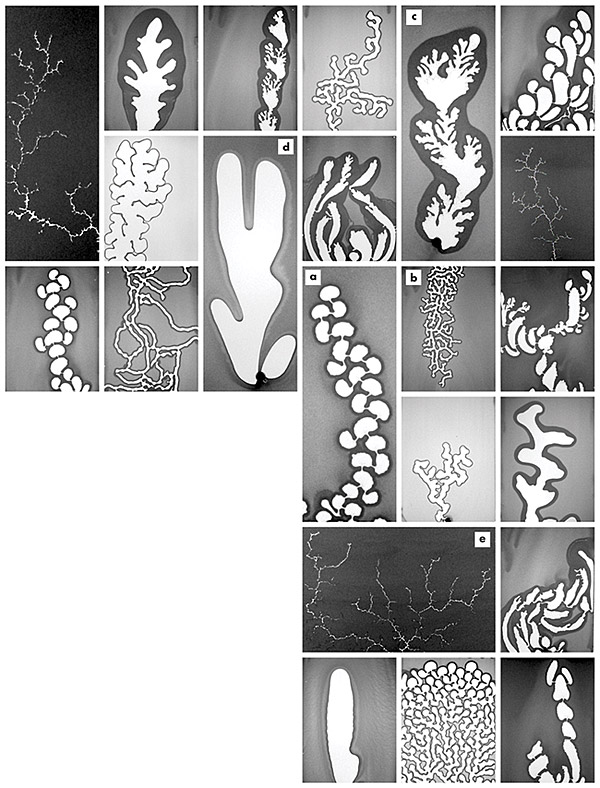Pattern palette for complex fluid flows
DOI: 10.1063/1.3603928
From landslides to oil and gas recovery to the squeeze of a toothpaste tube, flowing complex fluids are everywhere around us in nature and engineering. That is not to say, though, that they are always well understood. The dissipative interactions, through friction and inelastic collisions, often give rise to nonlinear dynamics and complexity manifested in pattern formation on large scales (see the article by Anita Mehta, Gary Barker, and Jean-Marc Luck, PHYSICS TODAY, May 2009, page 40
These images illustrate the diverse morphologies found in new work by Bjørnar Sandnes and colleagues at the University of Oslo and the University of Sydney. The experiment is simple: Air is injected into a generic mixture of granular material and fluid contained in a 500-µm gap between two parallel glass plates. At low injection rates, friction between the grains—glass beads averaging 100 µm in diameter—dominates the rheology, producing “stick–slip bubbles” (a) and labyrinthine frictional fingering (b). A transition to various other morphologies, including “corals” (c) and viscous fingers (d), emerges with increasing injection rates. At sufficiently high granular packing fractions, the material behaves like a deformable, porous solid, and the air rips through in sudden fractures (e). (B. Sandnes et al., Nat. Commun. 2, 288, 2011; images submitted by B. Sandnes.)

Images submitted by B. Sandnes.

To submit candidate images for Back Scatter, visit http://www.physicstoday.org/backscatter.html
